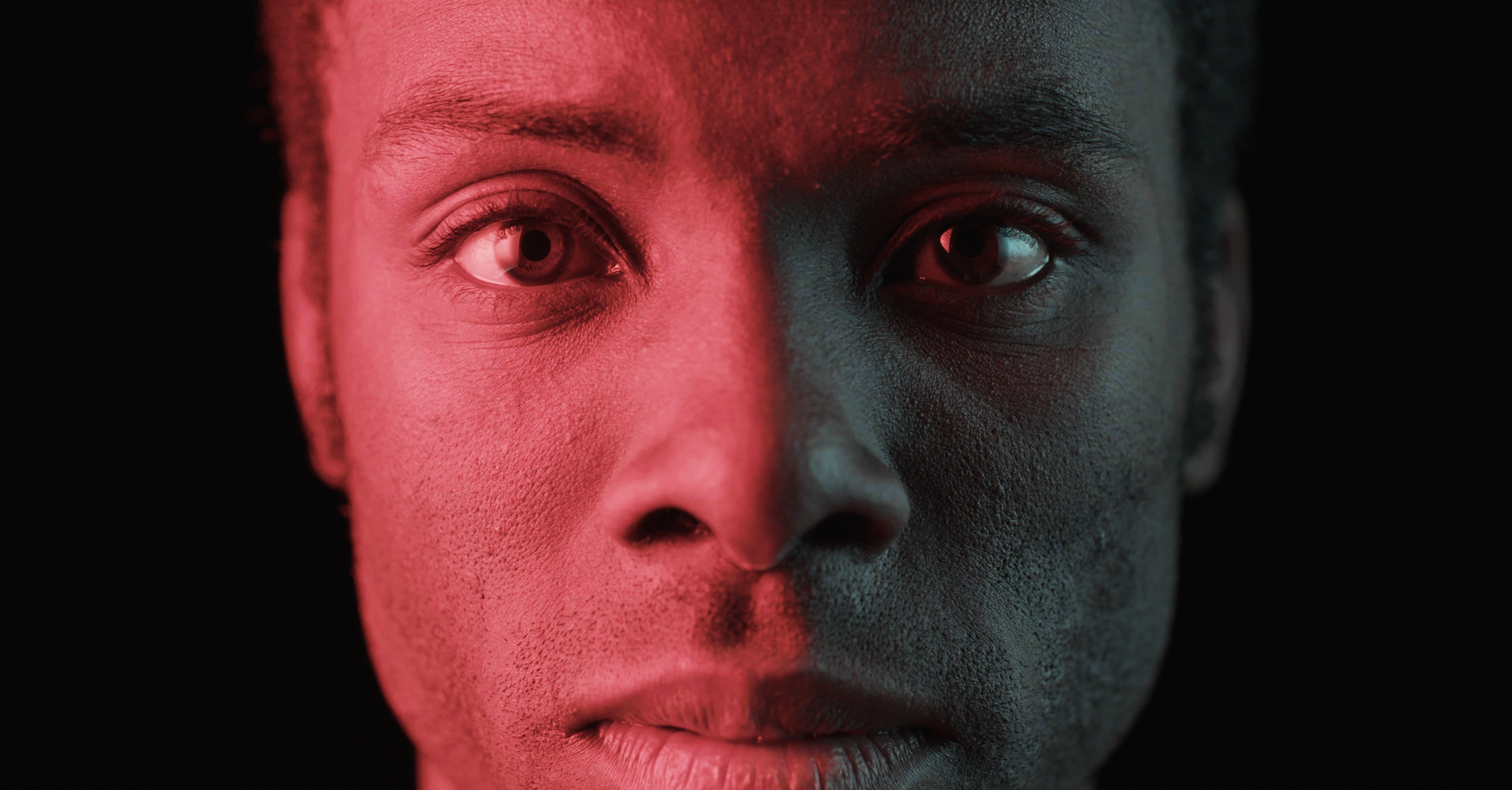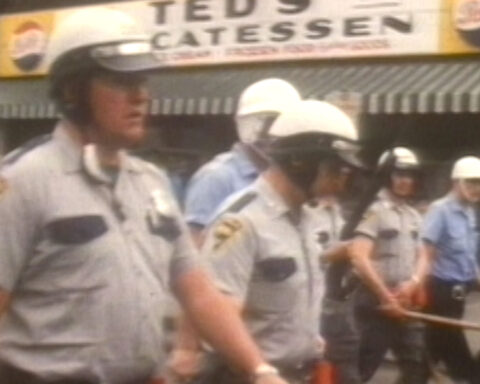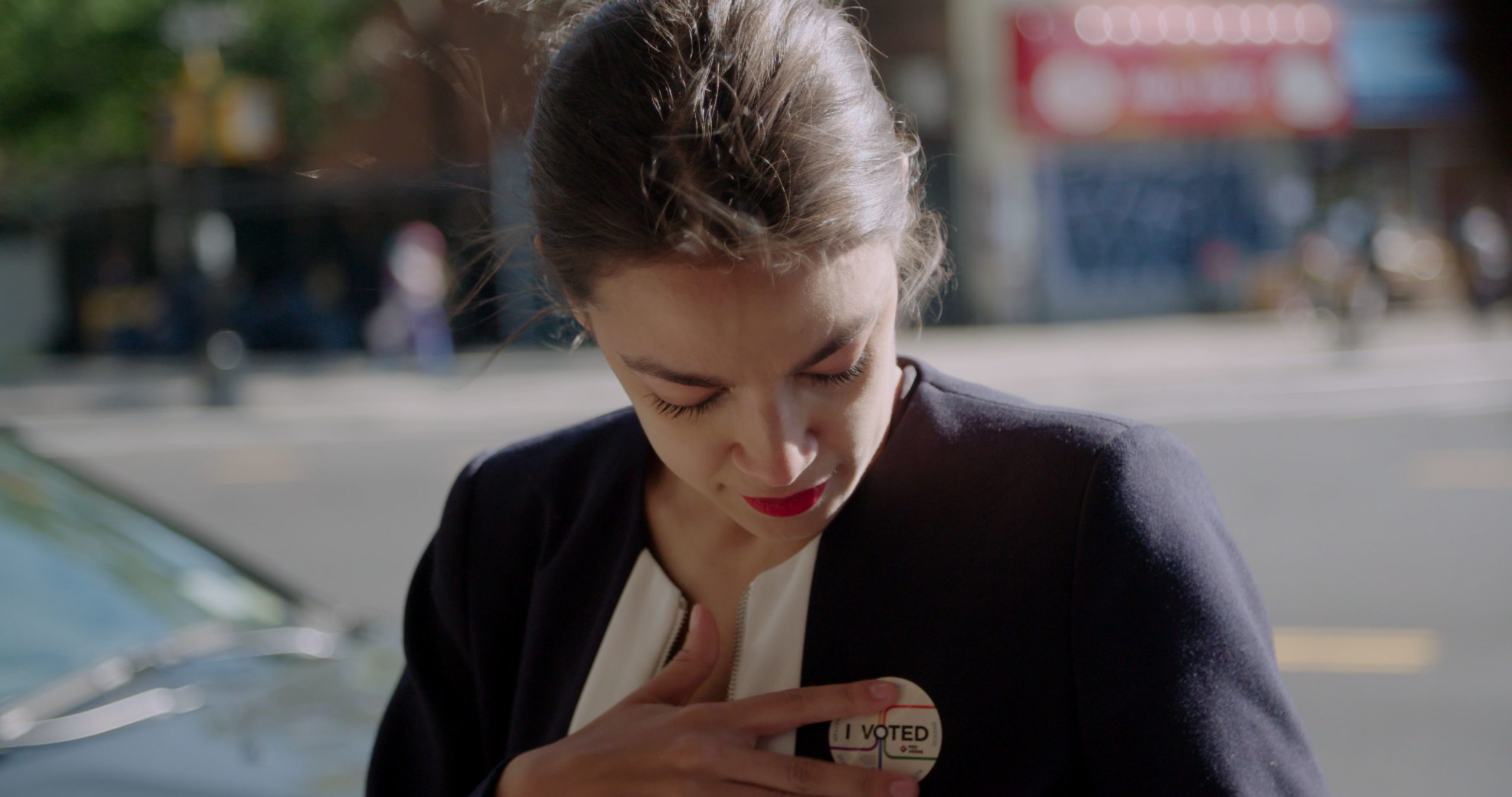Hate.
It’s raw, visceral and, in the rising global craziness of 2018, we see it every day. We also see it on screens. Raoul Peck’s documentary I Am Not Your Negro (2016), inspired by James Baldwin’s writing, recently struck a huge chord with movie audiences. In one of many moving scenes, a camera floats around large trees and under their thick dark branches, as narrator Samuel L. Jackson reads Baldwin’s story about meeting martyred civil rights activist Medgar Evers, “and his telling me how the tatters of clothes from a lynched body hung flapping in the tree for days, and how he had to pass that tree every day…you cannot lynch me and keep me in ghettoes without becoming a monster yourself.”
There are Canadians who like to believe such prejudice is confined to the American Deep South or South Africa. In Canadian filmmaker Charles Officer’s The Skin We’re In (2017), Toronto writer Desmond Cole notes: “As long as we’re not as bad as them, we never have to talk about what’s going on in our own country.” Racism and the resistance to it are a big part of Canadian history, and many of that history’s best-known moments have been documented by filmmakers: from the ship of Indian immigrants turned back from Vancouver harbour in 1914 (Ali Kazimi’s Continuous Journey, 2004), to violent clashes between anti-Semites and Jewish youth in 1930s Toronto (Peter Williamson’s The Riot at Christie Pits, 1996), to anti-Japanese internment camps of the 1940s (Jeanette Lerman’s Enemy Alien, 1975), to a black student uprising in 1960s Montreal (Mina Shum’s Ninth Floor, 2015), to First Nations’ barricades in 1990 Oka (Alanis Obomsawin’s Kanehsatake: 270 Years of Resistance, 1993), to Islamophobic murders in 21st century Quebec (Ubaydah Abu-Usayd and Abderrahmane Hedjoudje’s Your Last Walk in the Mosque, 2018).
Not every event in Canada’s history of racism is so well-known. Ryan Boyko’s That Never Happened (2017), for instance, sheds groundbreaking light on the Canadian government’s internship of 5,000 Ukrainians during the First World War. Other ethnic groups were also in these concentration work camps, but Ukrainians bore the brunt of this particular wartime suspicion of immigrants. For some families, the experience became a shameful, unspoken secret. In That Never Happened, though, all is out in the open, as descendants return to the scenes of long-abandoned camps, finding leftover slabs of concrete and bits of barbed wire. One descendant wonders how “this could happen in this beautiful country.”
There are moments that can leave someone permanently antiracist. For me, it was the time my father showed me pictures in Life magazine of a U.S. civil rights protester surrounded by police dogs ripping at his pant legs. “That,” my father said, “is how they treated people like us in Germany.”
For Toronto filmmaker Ali Kazimi, “growing up in India as a Muslim kid” made him aware of difference. He was also acutely conscious of social justice issues. Then, in 1983, at 22 years old, Kazimi was stopped and harassed at Canadian immigration when he arrived as a graduate student. “I was selected for special treatment by the immigration officers, and that got me thinking.” Kazimi grew up loving photo collages, and often the most creative things you do as an adult are rooted in things you loved as a child. Continuous Journey is a cinematic collage (newsreels, clippings, photos) comprising some of the most powerful and beautiful images in any Canadian documentary. It tells the story of the Komagata Maru, a ship filled with Indian passengers aiming to immigrate to Canada in 1914. It was instead held for two months in the Vancouver harbour before the passengers were shipped back to India to face violence and oppression. Said the Canadian immigration agent in charge of the harbour: “The Hindu never did one thing for humanity.” Said the enlightened Vancouver Sun: “We do not want these people here.”
Continuous Journey includes archival footage of a performance of “White Canada Forever,” a beer parlour sing-along song circa 1914. Subtitles were added by Kazimi. “That sequence to this day just makes everybody in the audience squirm,” Kazimi says. “So, I wanted to be playful but alert the audience that we were going to enter a world in which there were many things that were going be revealed that would make them question the history that they knew…[and] question how Canadian history had been constructed and what had been left out.”
Along with powerful old images, Continuous Journey is packed with great interviews (descendants, scholars), insights (it’s noted that some of the denied passengers would be inspired by their Vancouver experience to help overthrow British colonialism when they returned to India) and surprises, including unearthed on-board footage and scenes from the Battle of Coal Harbor. When Kazimi saw these images of the passengers pitted against a Canadian militia, “it was a total shock. I knew at that point there was no going back.”
This passion project was completed with Kazimi and his wife taking out a second mortgage on their home. Widely viewed in schools, Continuous Journey has been used as a point of entry before digging deeper into the subject. Kazimi’s interest in issues of race doesn’t stop with his own heritage. His Shooting Indians (1997) is about an Indian (himself) shooting film of an Indigenous artist (Jeffrey Thomas) who shoots photographs of other First Nations people. Random Acts of Legacy (2016) tells the story of a Chinese-American family through home movies from the 1930s and 40s.
Not every Canadian’s film about racism is set in Canada. As a white anti-apartheid expat, Vancouver filmmaker Marianne Kaplan had yearned to return to South Africa to do her bit for freedom. “For me, growing up in South Africa, I was affected by it. I guess some people weren’t, although I don’t know how you couldn’t be. You had to be. It was all around you.” Kaplan had lived almost a decade in Canada when she decided to return to South Africa in 1989 to shoot a film about the country’s resistance culture. It was a matter of timing perfection. “What I discovered when I was there was that it was the dying days of apartheid. People there knew that apartheid was going to end.” Within six months Nelson Mandela and other African National Congress leaders would be freed from prison.
Kaplan was entering a revolutionary situation when she crossed into South Africa, and her film Songololo (1990) was the result of pure guerrilla filmmaking. She and her producer Cari Green enlisted a local crew and set about making the first film since Lionel Rogosin’s Come Back, Africa (1959) to dive deep inside the everyday life of black South Africans. “The only images that you ever saw of black South Africans was on your TV screen where people were being mowed down by the police, where they were protesting, where they were at funerals. It was generally black South Africans as victims of apartheid. And one of the things that I wanted to do with the film was to show this other side—resilience. Yes, that [apartheid] was happening, but people were still making art, making music, using music and dance to resist apartheid.”
Songololo is a brilliant fusion of rebel politics and defiant arts. Although the horrors of apartheid permeate Songololo, it is nevertheless an entertaining film due to the fact that the featured activists are also talented performers. “We’re consciously working toward trying to laugh again,” poet, activist, actress and storyteller Gcina Mhlophe says in the film. “So many people survive hell in this country and we write songs about these things, we dance about these things.” The film was nominated for a Genie Award and feted at festivals.
Along with culture, sports have frequently offered an entry point for filmmakers commenting on racism. Canadians have told the stories of the NHL’s pioneering black player Willie O’Ree (Errol Williams’ Echoes in the Rink, 1998), sublime sprinter Harry Jerome (Charles Officer’s Mighty Jerome, 2010) and the Asahi Japanese Canadian baseball team (Jari Osborne’s Sleeping Tigers: The Asahi Baseball Story, 2003).
Sleeping Tigers: The Asahi Baseball Story, Jari Osborne, provided by the National Film Board of Canada
Sleeping Tigers poignantly recreates the love affair Vancouver’s pre-Second World War Japanese community had with its Asahi baseball team, winner of five consecutive Pacific Northwest championships. Sleeping Tigers follows the Asahi players during the Second World War when, along with the rest of their community, they were stripped of their possessions and forcibly relocated into internment camps. Asahi players formed baseball teams with their fellow prisoners. They entertained and deeply inspired the entire camp, while also regularly defeating teams from nearby towns. “We had a great feeling playing ball,” a veteran Asahi player tells Osborne’s camera.
Considering the country’s history, it’s no surprise that the bulk of Canadian filmmaking on the subject of racism has focused on First Nations history. Alex Williams’ The Pass System (2015), for instance, documents the governmental denial of Indigenous people’s freedom to leave the reserve without a pass, revealing a systematic segregation that lasted deep into the 20th century.
One of the world’s most prolific filmmakers, Alanis Obomsawin (now at work on her 52nd movie!) has spent a lifetime documenting the hardscrabble conditions of First Nations living, such as No Address (1988), about the tough adjustment of moving from reserve life to Montreal, and Richard Cardinal: Cry from a Diary of a Métis Child (1986), about a bright, sensitive child who’s moved from traumatic foster home to foster home and eventually takes his own life.
Obomsawin’s Kanehsatake: 270 Years of Resistance is a groundbreaking account of Indigenous history set to the tumultuous and cinematic Oka confrontation of 1990, when warriors and their supporters formed armed barricades to stop the expansion of luxury housing and a golf course on Mohawk land. Obomsawin was in Montreal when she heard about Oka on her car radio. “I was driving my car and I heard on CBC the shootout that was happening in Oka. I went straight to Oka. That was July 11th, 1990.”
It was difficult to get into the village, which authorities had cordoned off, so she went to her office at the National Film Board and assembled a small crew. “I couldn’t get a sound person so I did the sound,” she recalls. Going to Oka, “We were only allowed to stay on one road and of course we disobeyed everything. It was very challenging, as you can well imagine. And very difficult. Very dangerous too. There were guns everywhere. And people fighting to get in.” Growing up in Trois-Rivières, Obomsawin faced ongoing abuse from white classmates (“I got beat up all the time. It was just awful”). Despite the obstacles, she wasn’t about to leave Oka without a movie. “I think I stayed because I saw a lot of people having a lot of courage to make that stand and I had to have enough courage to stay and document it.”
Kanehsatake is a visual roller coaster, racing between riot soldiers and resistance warriors and outraged townsfolk burning effigies and shouting racial slurs. The film’s smart, quick-witted Indigenous resisters provide an ongoing history lesson. One notes that the Canadian government did keep one promise it made to the First Nations people: “They promised to take all of our land and they’re doing it.” The film premiered on England’s Channel Four and at the Toronto Festival of Festivals (now TIFF) before screening in theatres in Canada. Only then did the CBC relent and allow a national TV broadcast.
More recent Obomsawin films such as “Trick or Treaty?“:http://povmagazine.com/the-2014-toronto-international-film-festival (2014) showcase today’s generation of articulate young activists. Her Our People Will Be Healed (2017) is about the prideful students of a Manitoba school where First Nations people set the curriculum. “I don’t have to look for [that pride],” she says. “Like it’s there or it’s not. I’m a documentarian. I document. I listen. You can’t go to a community and say, ‘I know what I want to say.’ That’s not documenting.”
Obomsawin does have one timeless message, though, that goes beyond filmmaking. “What I keep telling young people and people that I work with is no matter how bad things are you have to go inside yourself, find the love that’s there. Don’t hang around with the hate.” Ali Kazimi’s filmmaking has taught him that much of Canada’s history, like our southern neighbor’s, is about entrenching a whiteskinned country. He also knows that caged children at America’s southern border is no random act. “There’s a long lineage to what Trump is doing and what he’s tapping into,” Ali says. “It’s not coming out of nowhere. So, having spent all this time with the early history, it feels familiar, and the familiarity is frightening.”
While watching or re-watching films for this article, it quickly became apparent that many of Canada’s best documentary filmmakers have frightening familiarity with racism. It’s often their own distinctive, personal histories—as well as social history—that drive them to put their art at the service of racial justice. Canada’s resistance to racism is in the nation’s editing rooms as well as its streets.













